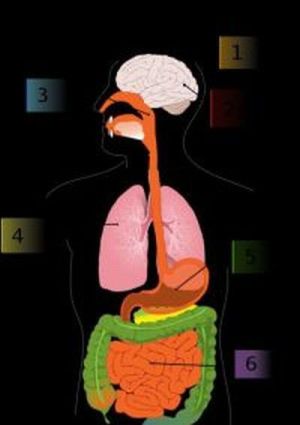Swine Flu H1N1
What is Swine flu?
- Swine influenza, or “swine flu”, is a highly contagious acute respiratory disease of pigs, caused by one of several swine influenza A viruses.
- Swine influenza viruses are most commonly of the H1N1 subtype, but other subtypes are also circulating in pigs (e.g., H1N2, H3N1, H3N2)
- The H3N2 swine virus was thought to have been originally introduced into pigs by humans.
- Sometimes pigs can be infected with more than one virus type at a time, which can allow the genes from these viruses to mix. This can result in an influenza virus containing genes from a number of sources, called a “reassortant” virus.
- Although swine influenza viruses are normally species specific and only infect pigs, they do sometimes cross the species barrier to cause disease in humans.
- The 2009 Swine flu outbreak in humans is due to a new strain of influenza A virus subtype H1N1 that derives in part from human influenza, avian influenza, and two separate strains of swine influenza.
Modes of Transmission:

- Most infections occur among people with direct pig contact.
- Sometimes a flu virus can mutate to be more transmissible to humans.
- People who work with swine, especially people with intense exposures, are at risk of catching swine influenza if the swine carry a strain able to infect humans.
- Swine flu cannot be spread by pork products, since the virus is not transmitted through food
Signs and symptoms
The symptoms of H1N1 (swine) flu in people are similar to the symptoms of regular human flu and include fever, cough, sore throat, body aches, headache, chills and fatigue. Some people have reported diarrhea and vomiting associated with H1N1 (swine) flu. In the past, severe illness (pneumonia and respiratory failure) and deaths have been reported with H1N1 (swine) flu infection in people. Like seasonal flu, H1N1 (swine) flu may cause a worsening of underlying chronic medical conditions.

- Fever
- Lethargy
- Lack of appetite
- Runny nose
- Sore throat
- Coughing
- Nausea
- Vomiting
- Diarrhea
Signs and symptoms
- chills
- fever
- sore throat
- muscle pains
- severe headache
- coughing
- weakness
- general discomfort
In children emergency warning signs that need urgent medical attention include:
- Fast breathing or trouble breathing
- Bluish or gray skin color
- Not drinking enough fluids
- Severe or persistent vomiting
- Not waking up or not interacting
- Being so irritable that the child does not want to be held
- Flu-like symptoms improve but then return with fever and worse cough
In adults, emergency warning signs that need urgent medical attention include:
- Difficulty breathing or shortness of breath
- Pain or pressure in the chest or abdomen
- Sudden dizziness
- Confusion
- Severe or persistent vomiting
- Flu-like symptoms improve but then return with fever and worse cough
How does this new H1N1 virus spread?

Spread of this H1N1 virus is thought to be happening in the same way that seasonal flu spreads. Flu viruses are spread mainly from person to person through coughing or sneezing by people with influenza. Sometimes people may become infected by touching something with flu viruses on it and then touching their mouth or nose.
How long can an infected person spread this virus to others?
At the current time, CDC believes that this virus has the same properties in terms of spread as seasonal flu viruses. With seasonal flu, studies have shown that people may be contagious from one day before they develop symptoms to up to 7 days after they get sick. Children, especially younger children, might potentially be contagious for longer periods. CDC is studying the virus and its capabilities to try to learn more and will provide more information as it becomes available.
Prevention & Treatment
What can I do to protect myself from getting sick?
There is no vaccine available right now to protect against this new H1N1 virus. There are everyday actions that can help prevent the spread of germs that cause respiratory illnesses like influenza.
Take these everyday steps to protect your health:
- Cover your nose and mouth with a tissue when you cough or sneeze. Throw the tissue in the trash after you use it.
- Wash your hands often with soap and water, especially after you cough or sneeze. Alcohol-based hand cleaners are also effective.
- Avoid touching your eyes, nose or mouth. Germs spread this way.
- Try to avoid close contact with sick people.
- Stay home if you are sick for 7 days after your symptoms begin or until you have been symptom-free for 24 hours, whichever is longer. This is to keep from infecting others and spreading the virus further.
Other important actions that you can take are:
- Follow public health advice regarding school closures, avoiding crowds and other social distancing measures.
- Be prepared in case you get sick and need to stay home for a week or so; a supply of over-the-counter medicines, alcohol-based hand rubs, tissues and other related items might could be useful and help avoid the need to make trips out in public while you are sick and contagious.
